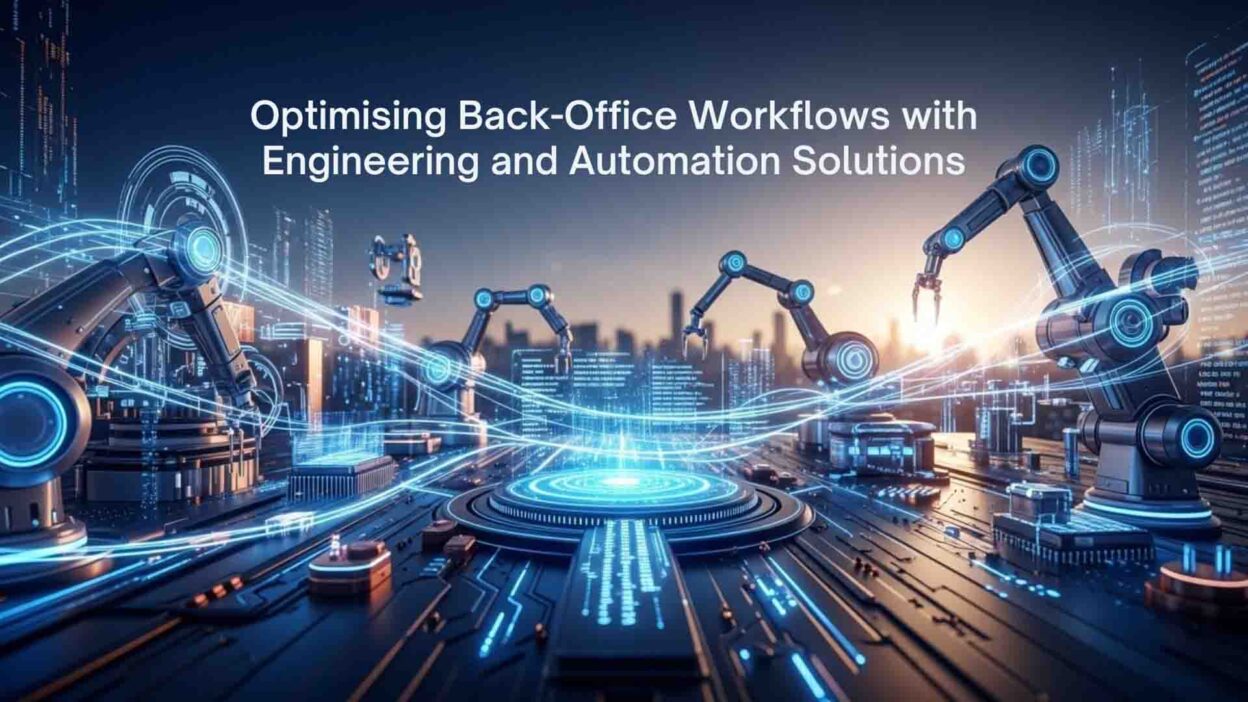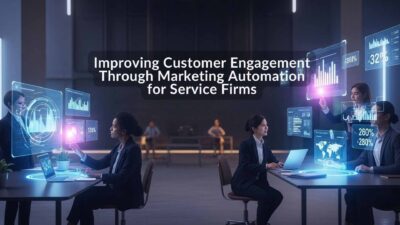Introduction
TL;DR Back-office operations power every successful organization. These behind-the-scenes functions keep businesses running smoothly. Accounting, human resources, data entry, and compliance management all happen away from customer view.
Manual processes dominate most back-office environments. Employees spend hours on repetitive tasks that drain productivity. Paper shuffling, data entry, and approval routing consume valuable time daily.
Automation solutions for back-office workflows transform how organizations operate internally. Technology handles routine tasks faster and more accurately than humans. Teams redirect energy toward strategic activities requiring judgment and creativity.
Companies face mounting pressure to reduce operational costs. Shareholders demand better margins while customers expect lower prices. Back-office efficiency directly impacts profitability.
Errors in manual processes create expensive problems. A single data entry mistake cascades through multiple systems. Compliance violations result from missed deadlines and overlooked requirements.
Employee satisfaction suffers from boring repetitive work. Talented professionals don’t join companies to copy data between spreadsheets. Turnover increases when jobs lack meaningful challenges.
Modern technology makes back-office transformation achievable. Cloud platforms, artificial intelligence, and process automation tools have matured significantly. Implementation no longer requires massive budgets or years of effort.
This comprehensive guide explores practical back-office optimization strategies. You’ll discover how engineering principles combined with automation deliver measurable improvements. Real examples demonstrate what organizations achieve through systematic workflow enhancement.
Table of Contents
Understanding Back-Office Workflow Challenges
Back-office departments struggle with problems accumulated over years. Legacy processes designed decades ago persist despite obvious inefficiencies. Nobody questions why things work a certain way.
Information silos prevent smooth collaboration. Accounting uses different systems than human resources. Data doesn’t flow between departments automatically.
Manual handoffs create bottlenecks everywhere. Documents sit in email inboxes waiting for approvals. Processes stall when key people take vacation.
Paper documents still dominate many organizations. Physical files require storage space and retrieval time. Finding information becomes a scavenger hunt.
Inconsistent process execution produces variable results. Different employees follow different procedures. Quality depends entirely on who handles each task.
Compliance requirements grow more complex annually. Regulations demand extensive documentation and audit trails. Manual tracking cannot keep pace with requirements.
Data accuracy problems plague reporting systems. Information entered once gets re-keyed multiple times. Each transfer introduces potential errors.
Visibility into workflow status remains limited. Managers cannot see where bottlenecks occur. Improvement efforts target symptoms rather than root causes.
Scalability hits walls quickly. Adding transaction volume requires proportional headcount increases. Growth strains existing processes severely.
Technology investments often miss the mark. New software gets implemented without redesigning workflows. Digital versions of bad processes remain inefficient.
Knowledge concentration creates dangerous dependencies. Critical procedures exist only in certain people’s heads. Absences and departures threaten operational continuity.
Training new employees takes extensive time. Complex procedures require weeks of shadowing. Productivity remains low during lengthy learning curves.
Core Principles of Workflow Engineering
Engineering discipline applied to back-office operations yields dramatic improvements. Systematic analysis reveals optimization opportunities. Structured methodologies guide transformation efforts.
Workflow engineering starts with comprehensive documentation. Current processes get mapped completely. Every step, decision point, and handoff becomes visible.
Value stream mapping separates value-adding from non-value-adding activities. Many steps exist only because of previous inefficiencies. Elimination beats optimization for wasteful activities.
Standardization creates consistency across operations. Best practices get codified into standard operating procedures. Variation decreases while quality improves.
Error-proofing builds quality into processes. Design prevents mistakes rather than detecting them later. Poka-yoke techniques eliminate common failure modes.
Continuous flow reduces batch processing delays. Work moves smoothly without waiting in queues. Cycle times compress dramatically.
Pull systems replace push approaches. Work starts only when downstream capacity exists. Bottlenecks become immediately visible.
Root cause analysis identifies true problem sources. Five-why questioning digs beneath surface symptoms. Solutions target fundamental issues.
Measurement establishes baselines and tracks progress. Key performance indicators reveal actual performance. Data replaces opinions in decision-making.
Kaizen principles embed improvement into daily operations. Small incremental changes compound over time. Everyone contributes enhancement ideas.
Key Automation Technologies for Back-Office Operations
Multiple technologies enable back-office transformation. Understanding capabilities helps select appropriate solutions. Automation solutions for back-office workflows span various technical approaches.
Robotic Process Automation Fundamentals
Robotic process automation uses software robots to perform repetitive tasks. These bots interact with applications like humans do. They click, type, copy, and paste automatically.
Rule-based processes automate most easily. Clear decision logic translates into bot instructions. Predictable workflows become fully automated.
Screen scraping extracts data from legacy applications. Bots read information regardless of underlying technology. Integration happens without modifying existing systems.
Attended automation assists human workers. Bots handle routine portions while humans manage exceptions. Productivity multiplies through human-robot collaboration.
Unattended automation runs without supervision. Bots execute scheduled tasks overnight. Processing happens continuously without breaks.
Orchestration coordinates multiple bots across complex workflows. End-to-end automation spans multiple applications. Department boundaries dissolve through integrated automation.
Exception handling routes unusual cases appropriately. Bots escalate to humans when encountering unexpected situations. Work never gets stuck in limbo.
Intelligent Document Processing
Document processing consumes enormous back-office resources. Invoices, contracts, forms, and reports all require human review. Manual processing creates bottlenecks and errors.
Optical character recognition converts images to text. Scanned documents become machine-readable. Legacy paper archives unlock for digital processing.
Natural language processing understands document content. Systems extract meaning rather than just characters. Context guides information extraction.
Machine learning improves accuracy over time. Systems learn from corrections humans make. Recognition rates increase with experience.
Classification sorts documents into categories automatically. Invoices, purchase orders, and receipts get identified. Routing happens based on document type.
Data extraction pulls specific fields from documents. Vendor names, amounts, and dates get captured. Structured data populates databases automatically.
Validation checks extracted information for accuracy. Business rules flag suspicious values. Quality control happens before human review.
Workflow Orchestration Platforms
Complex processes involve multiple steps across various systems. Orchestration platforms coordinate all components. Automation solutions for back-office workflows benefit tremendously from orchestration capabilities.
Business process management tools model workflows visually. Flowcharts define process logic clearly. Non-technical users design automated processes.
Task assignment routes work to appropriate people. Skills, availability, and workload all factor into routing. Balanced distribution prevents individual overload.
Status tracking provides real-time visibility. Managers see exactly where each process instance stands. Bottlenecks become immediately apparent.
Service level agreement monitoring ensures timely completion. Alerts trigger when deadlines approach. Escalation procedures prevent missed commitments.
Integration connectors link diverse applications. Data flows seamlessly between systems. Manual transfers disappear completely.
Analytics reveal process performance patterns. Cycle time, throughput, and error rates all get measured. Continuous improvement targets data-proven opportunities.
Artificial Intelligence Applications
AI capabilities extend automation beyond simple rule-following. Systems handle ambiguity and make intelligent decisions. Automation solutions for back-office workflows become increasingly sophisticated.
Predictive analytics forecast future outcomes. Historical patterns reveal likely scenarios. Proactive responses prevent problems.
Chatbots handle routine employee inquiries. HR policy questions get answered instantly. IT support tickets resolve without human agents.
Sentiment analysis monitors communication tone. Customer service interactions get evaluated automatically. Quality issues surface quickly.
Recommendation engines suggest optimal actions. System guidance helps employees make better decisions. Consistency improves across the organization.
Anomaly detection identifies unusual patterns. Fraud attempts and errors get flagged immediately. Risk mitigation becomes proactive.
Strategic Implementation Approach
Successful automation requires careful planning. Random tool adoption creates more problems than solutions. Strategic approaches deliver sustainable results.
Process Assessment and Prioritization
Not every process deserves immediate automation. Start by inventorying all back-office workflows. Document current procedures comprehensively.
Evaluate processes using multiple criteria. Transaction volume matters significantly. High-volume activities generate better automation returns.
Complexity affects implementation difficulty. Simple linear processes automate easily. Complex decision trees require sophisticated solutions.
Pain level indicates urgency. Processes causing most frustration warrant priority. Employee complaints reveal improvement opportunities.
Error rates show quality issues. Mistake-prone processes benefit enormously from automation. Accuracy improvements prevent costly corrections.
Regulatory importance determines risk. Compliance-critical processes need bulletproof reliability. Automation ensures consistent adherence.
Calculate potential savings for each workflow. Estimate time savings and error reduction. Prioritize based on financial impact.
Quick wins build momentum and organizational support. Early successes demonstrate value. Skeptics become believers through visible results.
Technology Selection Criteria
The automation marketplace offers overwhelming choices. Selecting appropriate tools requires careful evaluation. Wrong choices waste money and frustrate users.
Functionality must match process requirements. Feature lists mean nothing if capabilities don’t fit needs. Detailed requirement documentation guides selection.
Integration capabilities determine workflow effectiveness. New tools must connect with existing systems. APIs and connectors enable seamless data flow.
Scalability allows growth without platform changes. Small deployments expand into enterprise solutions. Architecture supports increasing volumes.
User experience affects adoption rates. Intuitive interfaces encourage usage. Complex tools collect dust despite powerful capabilities.
Vendor stability matters for long-term success. Established providers offer better support. Startup solutions carry higher risk.
Total cost of ownership includes licensing, implementation, and maintenance. Hidden costs emerge during operation. Comprehensive analysis prevents budget surprises.
Security features protect sensitive information. Back-office systems access confidential data. Compliance requirements vary by industry.
Cloud versus on-premise deployment involves trade-offs. Cloud options deploy faster with lower initial investment. On-premise solutions provide more control.
Change Management Essentials
Technology alone never guarantees success. People must embrace new ways of working. Change management determines ultimate outcomes.
Communication begins before implementation starts. Explain why automation matters clearly. Address job security concerns directly and honestly.
Employee involvement creates better solutions. Those doing work understand nuances. Input from practitioners improves automation design.
Training programs build confidence and competence. Hands-on practice prepares people for changes. Multiple learning formats accommodate different preferences.
Early adopter programs identify champions. Enthusiastic users become internal advocates. Peer influence convinces skeptical colleagues.
Success celebration motivates continued engagement. Share wins publicly across organizations. Recognition reinforces desired behaviors.
Feedback mechanisms capture improvement ideas. Users identify issues during daily operations. Continuous refinement optimizes performance.
Support resources need adequate staffing. Questions will arise during rollout. Accessible help prevents frustration.
Department-Specific Automation Applications
Different back-office functions face unique challenges. Automation solutions for back-office workflows must adapt to departmental needs. Customization delivers maximum value.
Accounting and Finance Workflow Optimization
Financial operations involve extensive repetitive tasks. Month-end close processes consume entire teams. Manual reconciliations introduce errors.
Invoice processing automation handles accounts payable efficiently. Bots extract data from supplier invoices. Matching happens against purchase orders automatically.
Expense report processing eliminates manual reviews. Employees photograph receipts on mobile devices. Policy compliance checking happens instantly.
Financial close automation accelerates reporting. Reconciliations run continuously rather than monthly. Accountants focus on analysis instead of data gathering.
Payment processing becomes touchless. Approved invoices trigger payments automatically. Cash management improves through optimized timing.
Revenue recognition follows complex rules. Automation ensures compliance with accounting standards. Audit trails document decision logic.
Tax compliance benefits from systematic processing. Returns get prepared from automated data collection. Filing deadlines never get missed.
Human Resources Process Enhancement
HR departments handle sensitive personal information. Manual processes risk privacy breaches. Automation improves security and efficiency.
Recruiting workflows coordinate multiple stakeholders. Job postings, candidate screening, and interview scheduling all automate. Time-to-hire decreases significantly.
Onboarding sequences deliver consistent experiences. New employees receive systematic orientation. Paperwork completion happens before start dates.
Performance review processes enforce consistency. Automated reminders prevent missed evaluations. Analytics reveal organizational talent patterns.
Benefits administration answers repetitive questions. Chatbots explain coverage options accurately. Enrollment processes guide employees through choices.
Payroll processing handles complex calculations. Time tracking integrates automatically. Errors decrease while processing speed increases.
Compliance reporting satisfies regulatory requirements. Equal employment opportunity data gets compiled. Government filings happen accurately and timely.
Supply Chain and Procurement Automation
Procurement teams manage vendor relationships and purchase orders. Manual processes create delays and errors. Automation streamlines sourcing operations.
Purchase requisition approvals route automatically. Budget checks happen before commitment. Compliance rules get enforced systematically.
Supplier onboarding standardizes vendor qualification. Required documentation gets collected automatically. Risk assessments happen consistently.
Contract management tracks important terms. Renewal dates trigger advance notifications. Price increases get flagged for negotiation.
Three-way matching verifies invoice accuracy. Purchase orders, receipts, and invoices reconcile automatically. Discrepancies route for investigation.
Inventory optimization balances stock levels. Demand forecasting drives replenishment. Working capital improves through better planning.
Spend analytics reveal savings opportunities. Category analysis shows where money goes. Strategic sourcing decisions improve.
IT Operations and Support Automation
Technology departments support entire organizations. Ticket volumes overwhelm small teams. Automation solutions for back-office workflows in IT multiply effectiveness.
Service desk automation handles routine requests. Password resets happen without human intervention. Common problems resolve through self-service.
Incident management workflows route tickets appropriately. Severity classification happens automatically. Escalation procedures prevent service level breaches.
Asset management tracks hardware and software. Lifecycle stages trigger replacement planning. License compliance stays current.
Provisioning new users becomes instant. Account creation spans multiple systems automatically. Access permissions follow role definitions.
Security monitoring detects threats continuously. Anomaly detection identifies suspicious activities. Response procedures launch automatically.
Backup and recovery processes run reliably. Verification testing ensures data protection. Business continuity improves through automation.
Measuring Automation Success and ROI
Automation investments demand accountability. Stakeholders expect tangible results. Proper measurement demonstrates value clearly.
Operational Efficiency Metrics
Processing time shows speed improvements. Tasks completing in minutes previously took hours. Cycle time reductions prove efficiency gains.
Throughput capacity reveals volume handling. Automated workflows process more transactions. Scalability becomes nearly unlimited.
Error rates demonstrate quality improvements. Automated processes make fewer mistakes. Rework costs decrease substantially.
Resource utilization improves dramatically. Employees accomplish strategic work instead of data entry. Productivity multiplies across teams.
Straight-through processing percentages indicate automation maturity. Transactions completing without touches represent ideal state. Higher percentages mean better automation.
Financial Performance Indicators
Cost per transaction shows unit economics. Automation reduces processing expenses. Lower costs improve margins directly.
Labor cost savings quantify efficiency gains. Existing staff handles higher volumes. Headcount growth slows despite business expansion.
Error correction expense decreases. Mistakes cost money to fix. Prevention beats detection economically.
Compliance penalty avoidance protects organizations. Automated processes reduce violations. Fines disappear along with risk.
Return on investment compares benefits against costs. Payback periods reveal how quickly automation pays for itself. Net present value justifies investments.
Quality and Compliance Measures
Accuracy rates show error reduction. Automated data entry eliminates typos. Information integrity improves across systems.
Audit trail completeness demonstrates compliance. Every action gets logged automatically. Regulatory requirements get satisfied.
Service level agreement adherence increases. Deadlines get met consistently. Customer satisfaction improves through reliability.
Regulatory violation frequency should decrease. Automation solutions for back-office workflows enforce rules systematically. Compliance becomes built-in rather than checked later.
Employee Experience Indicators
Job satisfaction surveys reveal sentiment changes. Automation should improve workplace happiness. Boring tasks disappear from daily work.
Turnover rates demonstrate retention improvements. Engaging work keeps employees longer. Replacement costs decrease substantially.
Training time requirements show simplicity gains. Automated workflows need less explanation. New employees become productive faster.
Innovation suggestions indicate engagement. Employees freed from routine tasks think creatively. Improvement ideas multiply.
Advanced Optimization Techniques
Basic automation delivers substantial benefits. Advanced approaches multiply returns further. Sophisticated organizations pursue continuous enhancement.
Intelligent Process Mining
Process mining analyzes workflow execution automatically. Event logs reveal actual process flows. You see reality rather than assumptions.
Bottleneck identification shows where work queues. Capacity constraints become visible. Targeted improvements remove obstacles.
Variant analysis reveals process diversity. Workflows execute many different ways. Standardization opportunities surface clearly.
Conformance checking compares actual versus intended processes. Deviations indicate problems. Compliance issues get detected automatically.
Root cause analysis determines why issues occur. Statistical techniques correlate factors with outcomes. Solutions target actual causes.
Predictive Workflow Analytics
Forecasting anticipates future processing needs. Historical patterns reveal likely scenarios. Resource allocation becomes proactive.
Workload prediction enables capacity planning. Staffing levels adjust to anticipated demand. Overtime needs get predicted accurately.
Deadline risk assessment identifies endangered processes. Early warnings prevent missed commitments. Intervention happens before failures occur.
Quality prediction flags likely errors. High-risk transactions get extra scrutiny. Prevention beats correction.
Continuous Improvement Frameworks
Automation should evolve continuously. Performance monitoring identifies enhancement opportunities. Regular optimization cycles maintain competitiveness.
A/B testing compares process variations. Different automation approaches get evaluated. Data determines which works better.
Feedback loops capture user suggestions. Employees identify improvement opportunities. Bottom-up innovation drives excellence.
Performance dashboards maintain visibility. Real-time metrics show current state. Degradation triggers immediate attention.
Regular review cycles assess automation portfolio. Underperforming implementations get enhanced. Resources shift to highest-value opportunities.
Implementation Best Practices
Experience teaches valuable lessons. Common mistakes get repeated unnecessarily. Following proven practices increases success probability.
Starting Small and Scaling
Pilot projects prove concepts before enterprise rollout. Small scope limits risk exposure. Learning happens before major commitments.
Proof of concept validates technical feasibility. Prototypes demonstrate capabilities. Stakeholders see tangible results.
Phased deployment manages change gradually. Department-by-department rollout prevents overwhelming people. Lessons from early phases improve later implementations.
Center of excellence builds organizational capability. Dedicated teams develop automation expertise. Standards and best practices get established.
Ensuring Data Quality
Automated processes require accurate data. Garbage in always produces garbage out. Data quality efforts enable automation success.
Data cleansing removes errors and inconsistencies. Standardization normalizes formats. Master data management establishes single truth sources.
Validation rules catch problems at entry points. Quality controls prevent bad data from entering systems. Prevention beats cleanup.
Maintaining Security and Compliance
Back-office systems access sensitive information. Automation solutions for back-office workflows must protect data rigorously. Security cannot become an afterthought.
Access controls limit automation permissions. Principle of least privilege applies to bots. Excessive permissions create risks.
Encryption protects data in transit and storage. Sensitive information never travels unprotected. Privacy regulations demand protection.
Audit logging tracks all automated actions. Complete trails satisfy compliance requirements. Investigations benefit from detailed records.
Documenting Automated Processes
Automation doesn’t eliminate documentation needs. Clear records help troubleshooting and enhancement. Knowledge preservation remains critical.
Process documentation explains automation logic. Future maintainers understand design decisions. Changes happen safely.
Technical specifications detail implementation. Developers reference architecture documentation. Consistency improves through standards.
User guides help people interact with automation. Training materials provide reference. Self-service support reduces help desk burden.
Future Trends in Back-Office Automation
Technology evolution continues accelerating. New capabilities emerge constantly. Forward-thinking organizations prepare for what’s coming.
Hyperautomation Emergence
End-to-end process automation becomes standard. Multiple technologies work together seamlessly. Digital workers handle entire workflows.
Low-code platforms democratize automation development. Business users build solutions without programming. IT enables rather than bottlenecks.
Autonomous systems make decisions independently. Machine learning guides actions dynamically. Human oversight decreases gradually.
AI-Powered Intelligence Expansion
Artificial intelligence handles increasingly complex tasks. Judgment-requiring activities become automatable. Automation solutions for back-office workflows grow more sophisticated continuously.
Natural language processing understands unstructured content. Contracts, emails, and documents get analyzed automatically. Extraction accuracy approaches human levels.
Computer vision reads visual information. Forms and images become machine-readable. Manual review needs diminish.
Conversational AI manages complex interactions. Virtual assistants handle nuanced requests. Employee experience improves dramatically.
Cloud-Native Architecture Adoption
Modern automation builds cloud-first. Scalability and flexibility become inherent characteristics. Traditional on-premise limitations disappear.
Microservices architecture enables modular automation. Individual components update independently. Flexibility increases substantially.
API-first design facilitates integration. Everything connects easily. Ecosystem partnerships expand capabilities.
Frequently Asked Questions
What are automation solutions for back-office workflows?
Automation solutions for back-office workflows use technology to handle repetitive administrative tasks. Software robots, artificial intelligence, and orchestration platforms work together. Manual processes become automated systematically.
How much do back-office automation solutions cost?
Costs vary based on scope and complexity. Small robotic process automation projects start around $10,000. Enterprise implementations run into hundreds of thousands. Cloud platforms offer subscription pricing reducing upfront investment.
Will automation eliminate back-office jobs?
Automation changes jobs rather than eliminating them wholesale. Employees shift from repetitive tasks to strategic work. Some roles evolve significantly. Organizations typically redeploy rather than lay off staff.
How long does implementation take?
Timeline depends on process complexity and scope. Simple automation projects complete within weeks. Enterprise-wide transformation takes months or years. Phased approaches deliver value incrementally.
What processes should we automate first?
Prioritize high-volume rule-based processes. Target activities causing employee frustration. Choose workflows with frequent errors. Quick wins demonstrate value and build momentum.
Can small companies benefit from automation?
Absolutely. Cloud-based tools make automation affordable. Small organizations gain competitive advantages. Proportional benefits often exceed large enterprise implementations. Solutions scale to any size.
How do we measure automation success?
Define metrics before implementation. Track processing time and error rates. Monitor cost savings and productivity gains. Calculate return on investment. Compare results against baselines.
What technical skills do we need?
Requirements depend on chosen solutions. Low-code platforms minimize technical demands. Complex implementations need developers. Training fills most skill gaps. Vendors provide implementation support.
Read More:-From Manual to Machine: A Step-by-Step Guide to Implementing AI Workflows in Your Organization
Conclusion

Back-office operations determine organizational efficiency fundamentally. Hidden processes consume enormous resources. Manual workflows cannot compete with modern demands.
Automation solutions for back-office workflows deliver transformative improvements. Technology handles repetitive tasks faster and more accurately. Teams redirect energy toward value-creating activities.
Implementation requires strategic thinking beyond tool purchase. Engineering principles guide systematic optimization. Process understanding precedes automation always.
The benefits extend across multiple dimensions. Processing times shrink dramatically. Error rates approach zero. Costs decrease while quality improves.
Employee satisfaction increases when boring work disappears. Talented people want meaningful challenges. Automation eliminates soul-crushing repetitive tasks.
Competitive pressure demands back-office excellence. Organizations with efficient operations outperform competitors. Market conditions reward operational discipline.
Technology capabilities continue advancing rapidly. Artificial intelligence makes automation increasingly sophisticated. Early adopters establish advantages others struggle matching.
Starting feels overwhelming to many organizations. Break transformation into manageable phases. Quick wins build momentum and support.
Choose processes carefully for initial automation. High-volume rule-based workflows deliver best returns. Success breeds organizational enthusiasm.
Select technology matching specific requirements. No single platform solves everything. Integration capabilities matter tremendously.
Change management determines ultimate outcomes. People must embrace new ways of working. Communication and training prevent resistance.
Measure results rigorously throughout implementation. Baselines establish starting points. Continuous monitoring validates benefit realization.
The future belongs to automation-enabled organizations. Manual processes cannot compete economically. Efficiency gaps compound over time.
Automation solutions for back-office workflows represent strategic necessity. Delaying means losing ground continuously. Competitors implementing automation gain decisive advantages.
Begin your optimization journey immediately. Assess current workflows honestly. Identify automation opportunities systematically.
Invest in appropriate technologies strategically. Build organizational capabilities gradually. Scale based on demonstrated results.
Your back-office transformation awaits. Efficiency improvements deliver bottom-line impact. Employee engagement increases through better work.
Take action now on workflow optimization. Deploy automation solutions for back-office workflows thoughtfully. Engineer processes before automating them. Transform your operations and accelerate organizational success today.





